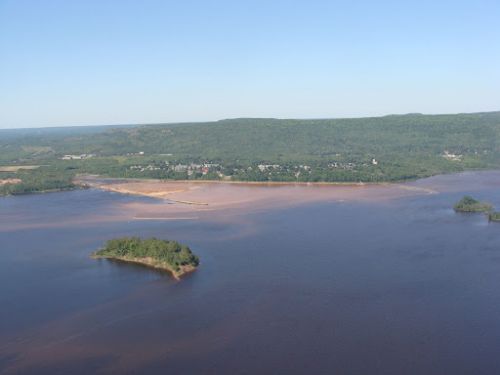NOAA Seeks Public Comment on a Draft Natural Resource Damage Assessment Plan for the U.S. Steel Site in Duluth, Minnesota
FEB. 6, 2023 — NOAA and other federal, state, and tribal natural resource trustees have released a Draft Damage Assessment Plan for the St. Louis River / U.S. Steel site in Duluth, Minnesota, and are soliciting public comments. The draft plan describes studies and data analysis the trustees may conduct to determine the nature and scale of injuries to natural resources from releases of hazardous wastes at the site.
Damage assessment planning is one step in determining the types and amounts of natural resource restoration needed to compensate for ecological harm caused by pollution and the loss of human uses of natural resources.
Natural resource damage assessment, or NRDA, is separate from and in addition to the cleanup of hazardous waste sites. In conducting NRDA, trustee agencies seek to restore injured natural resources, compensate for lost ecological services they would have provided had there not been contaminant releases, and compensate the public for lost or diminished human uses of natural resources as well.
Natural resources include many parts of the natural environment including water, sediment, fish, birds, and mammals. Human uses include the loss or impairment of recreational opportunities, such as boating; and adverse effects on natural resource-based tribal cultural uses.
In this geography, cultural losses impact the Anishinaabe (Ojibway) tribe. Spirit Lake and Spirit Island in particular are central to the Anishinaabe (Ojibway) migration story. Spirit Island is a culturally significant location where ceremonies and other traditions are practiced to this day.
Recent Developments
In 2020 the natural resource trustees completed a pre-assessment screen, necessary for determining if a natural resource damage assessment is needed; U.S. Steel agreed to cooperate with the trustees on the damage assessment. Before the site sediment was cleaned up, the trustees were able to complete a study on the toxicity of the site sediment to invertebrate biota by collecting and analyzing contaminated sediment. The sediment toxicity study report will be available on NOAA's website for this case by mid-February 2023.
Additional potential damage assessment analyses and studies are described in the Draft Natural Resource Damage Assessment Plan, which is available for public review and comment through March 23, 2023. Upon the close of the public comment period, the trustees will consider comments and issue a final assessment plan, including responses to comments received.
To submit comments on the draft assessment plan electronically, please send them to Ms. Reena Bowman at USSteelNRDARcomments@fws.gov. Or you can mail them to:
Ms. Reena Bowman U.S. Fish & Wildlife Service 3815 American Blvd. East Bloomington, MN 55425For more information, see the St. Louis River / U.S. Steel site.
 An official website of the United States government.
An official website of the United States government.

